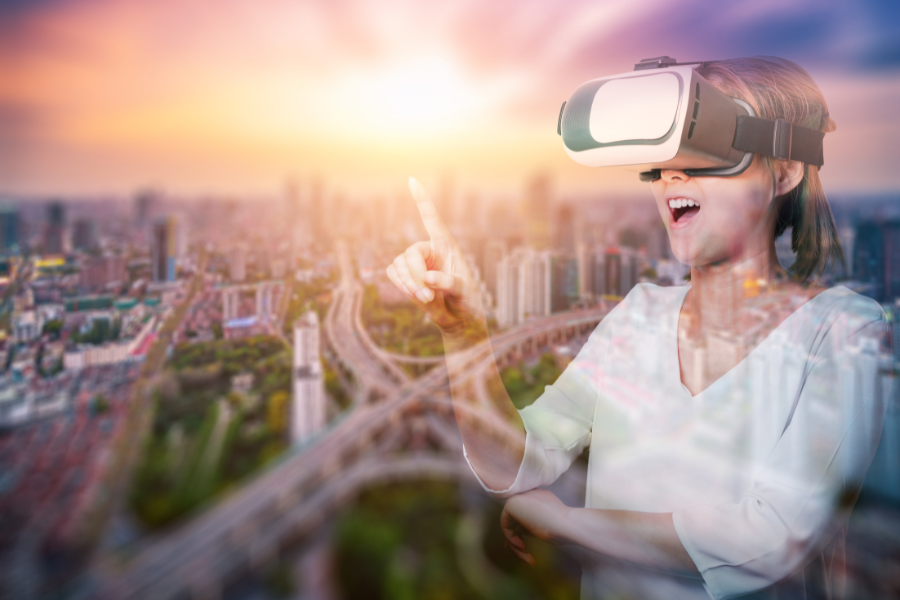
Virtual reality (VR) has become increasingly popular in recent years, thanks to advancements in technology and the proliferation of VR applications across various industries. From gaming to education, therapy to tourism, and sports to fitness, VR has proved to be a versatile tool with endless possibilities.
Gaming has been one of the primary applications of VR, and it’s easy to see why. With VR headsets like the Oculus Quest 2 and the PlayStation VR, gamers can immerse themselves in virtual worlds that feel more realistic than ever before. In addition to the visual experience, VR also offers interactive gameplay that enables players to move, jump, and even use their hands to interact with the environment. As a result, VR has revolutionized gaming and provided an entirely new level of immersion and engagement.
Beyond gaming, VR is being used in education and training to create simulated environments that allow learners to practice skills in a safe and controlled setting. For instance, medical students can use VR to practice surgeries, while pilots can learn to fly planes in a simulated environment. This technology is particularly useful in fields where practical experience is crucial, but real-world opportunities to practice are limited. By using VR, learners can gain valuable experience and develop their skills without putting themselves or others in danger.
Another exciting application of VR is in the field of therapy and mental health. Exposure therapy in virtual environments has proved to be an effective tool for treating anxiety and phobias. In a virtual setting, patients can confront their fears in a safe and controlled way, making it easier for them to overcome them. Additionally, VR can be used to create relaxing and calming environments to help patients manage stress and anxiety.
The tourism and entertainment industries have also embraced VR, particularly in light of the pandemic, which has made travel and in-person entertainment difficult. With VR, people can explore different places and enjoy entertainment experiences without leaving their homes. Virtual tours of museums, art galleries, and theme parks have become increasingly popular, allowing people to experience these attractions in a more immersive way.
In the sports and fitness world, VR is also making its mark. Athletes can use VR to practice their skills and improve their performance in a simulated environment. For example, a basketball player can use VR to practice shooting free throws, while a golfer can use it to perfect their swing. Additionally, VR can be used to create engaging and motivating workout experiences, making exercise more enjoyable and effective.
The rise of VR has also created new opportunities for businesses. For example, retailers can use VR to create virtual stores that enable customers to explore products and make purchases in a more engaging way. Real estate agents can use VR to create virtual tours of properties, making it easier for potential buyers to view homes remotely. Additionally, businesses can use VR to train employees and provide them with practical experience in a safe and controlled setting.
As the technology behind VR continues to evolve, we can expect even more innovative applications in the future. One promising development is the use of VR in medicine and healthcare. For example, VR can be used to create realistic simulations of medical procedures, enabling doctors and nurses to practice and perfect their skills without putting real patients at risk. Additionally, VR can be used to create personalized treatment plans that are tailored to an individual’s unique needs and circumstances.
In conclusion, the rise of VR has opened up new possibilities across a range of industries, from gaming and education to therapy and entertainment. With its immersive and interactive nature, VR has transformed how we experience the world around us and created new opportunities for businesses and individuals alike. As the technology behind VR continues to improve, we can expect even more exciting developments and applications in the future.